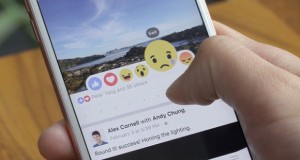How to interpret Facebook reactions
The new Facebook “reactions” allow users to go beyond simply liking content. There are now six different emojis with which to react: like, love, haha, wow, sad or angry.
This new function is fairly simple for users to work, they just hover over the old like button (or hold down the like button on mobile devices) and select their chosen reaction.
This new range of reactions addresses a common complaint about the limitations of the old like button. To show support to a friend who is going through a tough time, “liking” their status seems inappropriate – other response options were needed.

Interpretation
The key question is can these reactions be used to better understand audiences?
Currently, Facebook’s newsfeed algorithm is interpreting reactions in the same way it previously did with likes – it counts any “reaction” as a positive endorsement and assumes that the user would like to see more similar content.
Facebook has said that they will decide at a later point how the new reactions should be weighted in order to personalise user newsfeeds but they need to collect more data on user reaction use first.
Reactions without context
It will be interesting to see if the new reactions lead to a reduction in comments, as some have speculated. People are now able to select the angry reaction, whereas before they may have left a negative comment.
If this is true, it’s a mixed blessing. It may well reduce the number of angry or negative comments that a brand or organisation has to deal with. However, reactions lack context while a comment offers insight into the user’s feelings and motivation. This lack of context makes interpretation difficult.
Net Imperative have suggested some ways in which Facebook reactions could be interpreted.
Like
The old faithful remains, and with other reactions filtered out, this could be taken to mean a solid endorsement.
Love
This is the goose’s golden egg in terms of Facebook engagement. Those loving content can be assumed to be loyal customers and important brand ambassadors.
Haha
This is another positive reaction, unless the laughter is at the expense of the content poster. Funny content is always popular so it’s possible that a high number of “haha” reactions will make a post look more appealing than one with a high number of likes.
Wow
Unless used sarcastically, this can also be interpreted as a positive endorsement. Brands and organisations should try to produce interesting that invites “wow” reactions from followers.
Sad
It is predicted that this will be used as a supportive reaction – either personally to friends or in reaction to tragic events.
Angry
This is a quick and easy way for someone to give negative feedback or express displeasure.






